Are you having trouble accessing your bedroom because you forgot the door code? Did you recently move into a new place and need to reset the bedroom door code? That is no problem. You can easily reset the code in just a few steps.
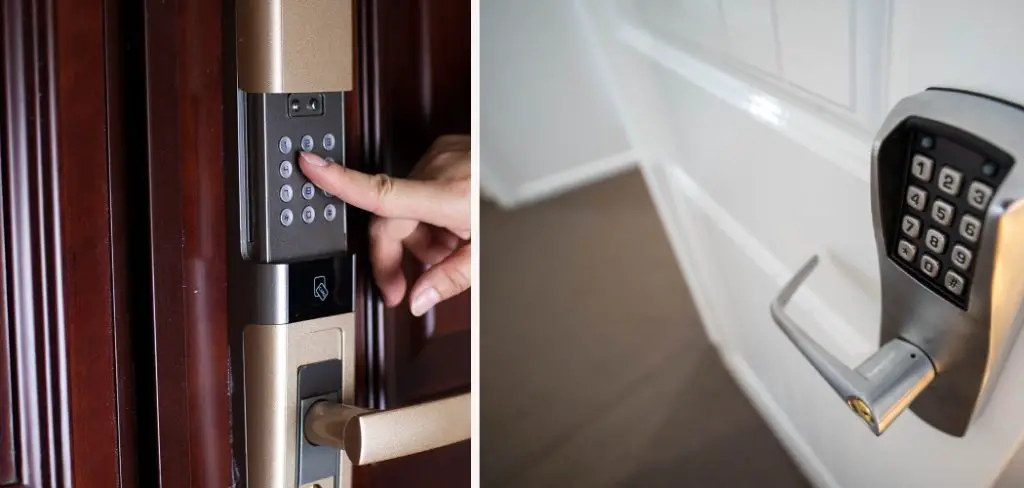
In the modern age, the importance of maintaining the security and privacy of your personal space cannot be overstated. One effective way to ensure this within your home is through the use of coded bedroom doors. However, there comes a time when you need to reset the code, whether for security reasons, after sharing it beyond your comfort zone, or simply because it’s time for a change. Resetting your bedroom door code may seem daunting at first, particularly if you’re not familiar with the process.
This guide aims to demystify the process, providing you with clear, step-by-step instructions on how to reset bedroom door code.
What are the Causes of Needing to Reset the Bedroom Door Code?
First, let’s discuss some common reasons why you might need to reset your bedroom door code:
- Forgetting the Current Code: It happens to the best of us – with so many codes and passwords to remember, it’s easy to forget one.
- Moving Into a New Place: If you recently moved into a new home or apartment, you may not know the previous owner’s code and must reset it to your own.
- Security Concerns: If you feel that your current code has been compromised or shared with someone who shouldn’t have access, it’s important to change it for safety reasons.
- Wanting a New Code: Sometimes, you just want to change things up and have a new code for your bedroom door.
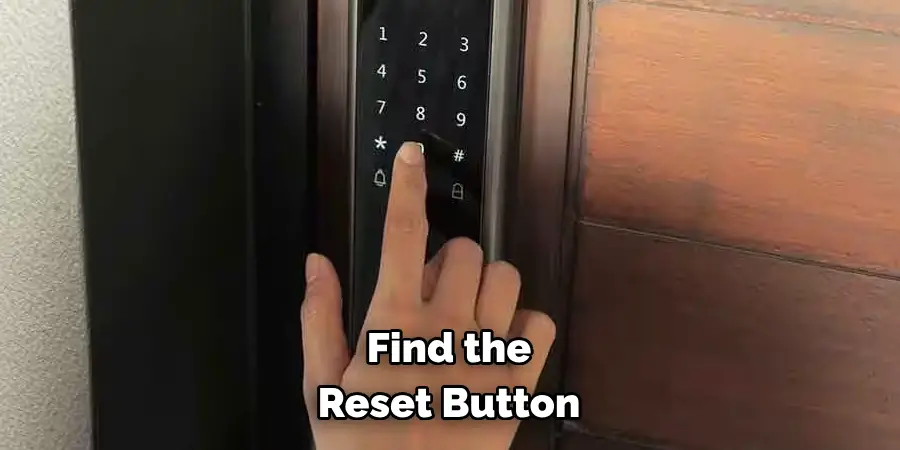
What Will You Need?
Before you begin the process of resetting your bedroom door code, make sure you have the following items on hand:
- A Screwdriver: Depending on your lock type, you may need a screwdriver to remove the cover or back panel.
- The Current Code: If you still remember your old code, it will make the process easier. If not, don’t worry – we’ll also provide instructions for resetting without the old code.
- The New Code: Choose a new code that you will remember easily but that is not too obvious or easy to guess.
- Patience: Resetting a door code may take a few tries, so it’s important to remain patient and not get frustrated if you don’t get it right on the first attempt.
Now that you have everything you need let’s go through the steps of resetting your bedroom door code.
10 Easy Steps on How to Reset Bedroom Door Code
Step 1. Locate the Reset Button:
Your first step is to find the reset button or switch on your lock. This is often found on the inside part of the door lock, possibly under a panel or cover that you’ll need to gently remove with your screwdriver. Additionally, check the lock’s manual for specific instructions on where to find the reset button.
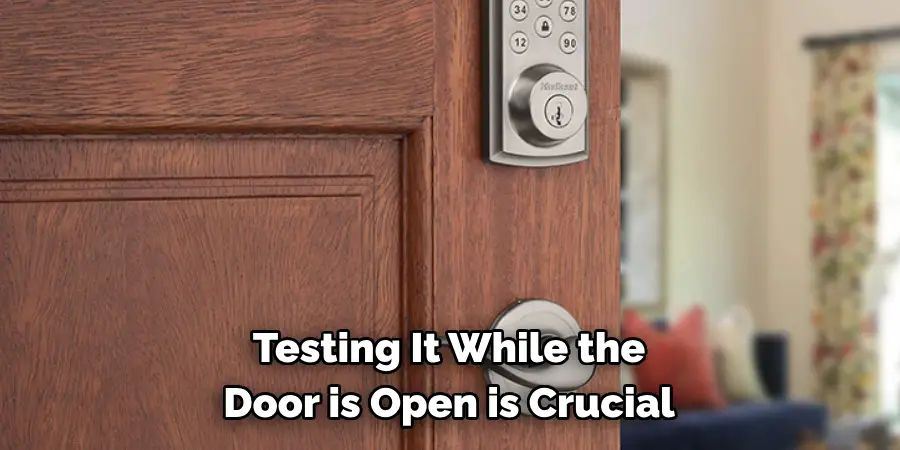
Step 2. Press and Hold the Reset Button:
Once you’ve located the reset button, press and hold it, usually, you need to do this for a few seconds. The exact duration can vary from lock to lock, but generally, holding it for around 3-5 seconds is a good rule of thumb. During this process, ensure the door is open so you can access both sides of the lock if needed. This step is crucial as it initiates the lock’s programming mode, allowing you to input a new code.
Step 3. Enter Your New Code:
After successfully initiating the programming mode by holding down the reset button, it’s time to enter your new code. This code should be something memorable to you but not easily guessed by others. When choosing a new code, try to avoid common patterns or sequences such as “1234” or your birth year. Once you decide on your new code, enter it on the keypad. Some locks will require you to enter the new code twice to ensure accuracy, so be prepared to input it again if prompted.
Step 4. Confirm the New Code:
After entering your new code, the next step is typically to confirm it. Depending on the brand and model of your bedroom door lock, this might involve pressing a specific button marked “Enter” or another designated key to confirm the new code. Pay close attention to any audible or visual signals from the lock, such as a beep or flashing light, indicating the new code has been successfully set. If your lock does not have a confirmation button, entering the new code for a second time may automatically save it.
Step 5. Test the New Code:
After confirming your new code, testing it while the door is open is crucial. Enter your new code on the keypad just as you would when normally unlocking the door. If the door locking mechanism responds correctly by unlocking or engaging, you have successfully reset your bedroom door code. If it doesn’t work, try entering the code again carefully. If it fails again, you may need to repeat the reset process from the beginning to ensure the new code is properly programmed.
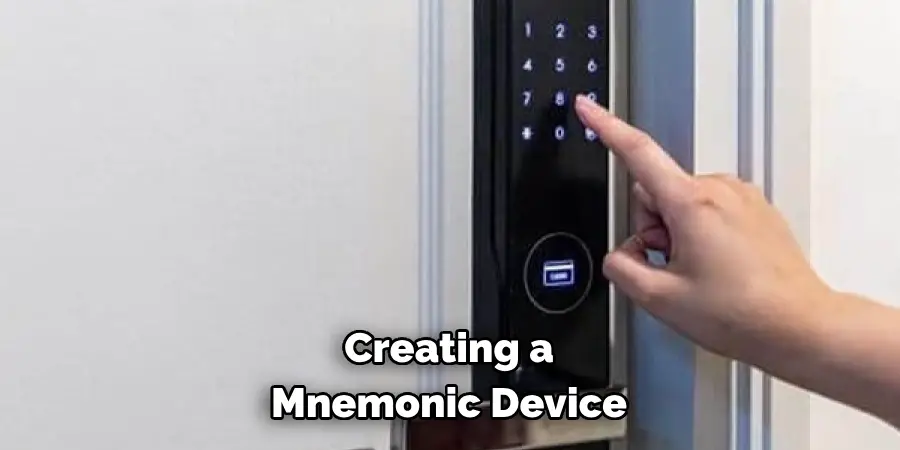
Step 6. Replace the Cover or Panel (if applicable):
Once you have successfully reset and tested your new bedroom door code, the next step is to replace any cover or panel you may have removed during the process. Carefully position the cover back onto the lock, ensuring it aligns properly. If screws were removed, use your screwdriver to secure them back into place. This step is important for the aesthetics of your door lock and to protect the internal mechanisms from dust and potential damage. Some models might click back into place without the need for screws, so make sure to consult your lock’s manual for specific assembly instructions. Reattaching the cover or panel correctly ensures that the lock continues to function properly and remains secure.
Step 7. Create a Backup Code (if possible):
Some bedroom door locks can set a backup code in addition to the primary code. This step is highly recommended as it provides an alternative way to access your bedroom if you forget the new code. To set a backup code, follow the same process as you did for the primary code, ensuring you choose a distinct yet memorable number. Not all locks will have this feature, so refer to the lock’s manual to see if this is an option for your specific model and how to activate it. A backup code can save you from potential lockouts and the hassle of frequently resetting your code.
Step 8. Memorize Your New Codes:
With your new primary and, if applicable, backup codes set, the next crucial step is committing them to memory. A good strategy to remember your codes is associating them with a significant date, a special sequence of numbers, or creating a mnemonic device. It’s also wise to avoid writing down your codes in easily accessible places. However, for those who might have difficulty remembering, consider storing the code(s) in a secure, encrypted digital note or app that requires authentication to access. This ensures that even if your memory fails, you can still access your bedroom without compromising security.
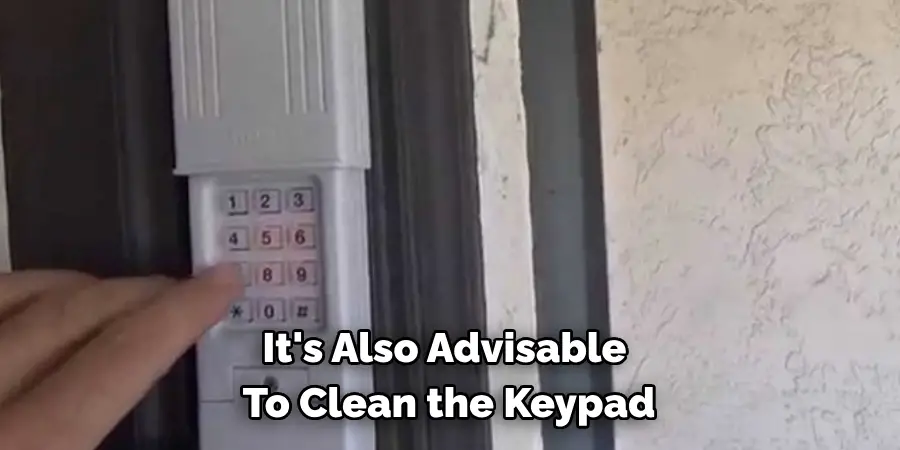
Step 9. Regular Maintenance Checks:
Regular maintenance checks are essential to ensure the longevity and reliability of your bedroom door’s locking mechanism post-reset. Periodically examine the lock, keypad, and any associated hardware for signs of wear and tear. Keep an eye on the battery indicator if your lock is battery-operated, replacing batteries as needed to avoid malfunctions.
It’s also advisable to clean the keypad gently with a dry cloth to prevent dirt buildup that might interfere with button functionality. In case of any irregularities or persistent issues post-reset, consulting the lock’s manual or contacting customer support can provide valuable guidance and solutions. Continuing to maintain your door lock can prevent future locking issues and enhance your overall security.
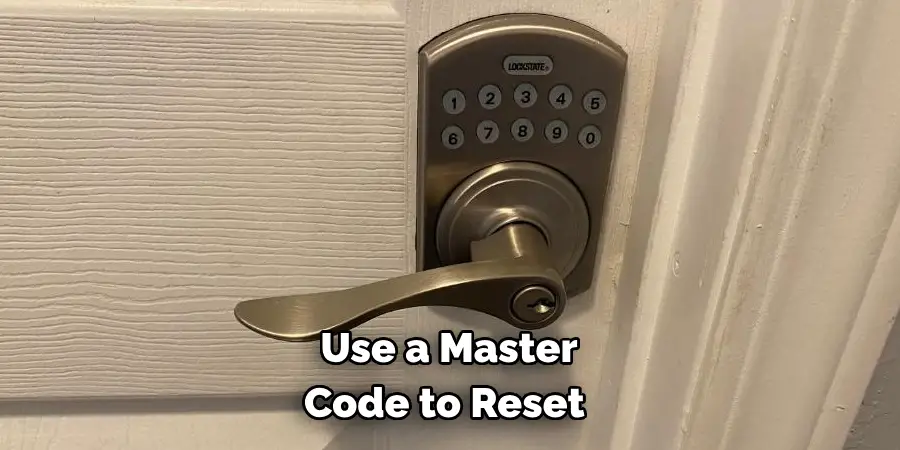
Step 10. Review and Update Your Codes Periodically:
Ensuring your bedroom’s security doesn’t stop after setting up your new code(s). It’s prudent to review and, if necessary, update your codes periodically. Changing your codes every few months can further safeguard your privacy and enhance security, particularly if you suspect the code may have been compromised or if you’ve shared it with someone who no longer needs access.
When updating your codes, follow the previously outlined to reset and test the new code(s). Regularly updating your codes keeps potential intruders at bay and encourages you to keep track of who has access to your bedroom at any given time. Remember to also update any backup codes you have set, ensuring all codes are fresh and secure.
By following these steps, you can easily and confidently reset your bedroom door code and maintain the security of your personal space.
5 Additional Tips and Tricks
- Verify Battery Power: Ensure that the electronic lock’s batteries are fully charged or new. Low battery power can sometimes hinder the code reset process.
- Consult the Manual: Each lock has its unique reset process. Reviewing the manufacturer’s manual for specific instructions can save time and reduce errors.
- Use a Master Code: If available, use a master code to reset the bedroom door code. The manufacturer usually provides this, or can be set up during initial installation.
- Reset Code Remotely: Some electronic locks have remote capabilities, allowing code reset through a mobile app or website. This can be useful if you are not physically present at the lock location.
- Consider a Backup Key: If the electronic lock malfunctions or you forget the code, having a backup key can save you from being locked out. Keep the key in a secure location that is easily accessible to authorized individuals.
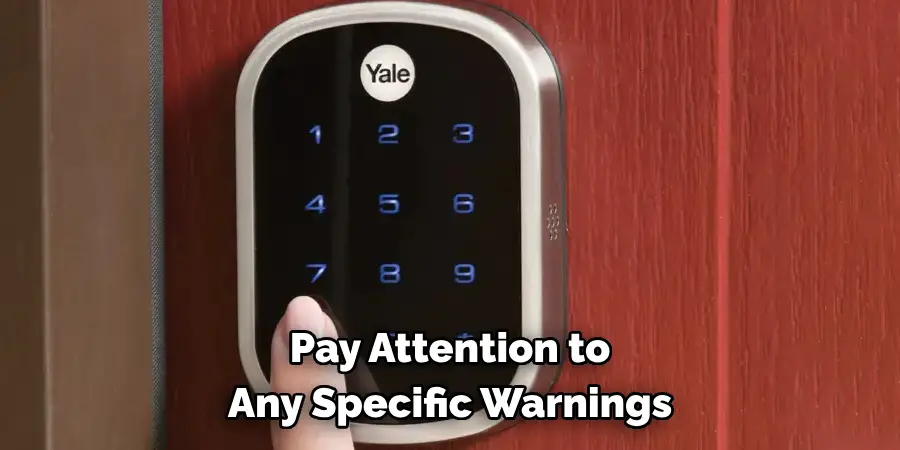
In addition to these tips, it is also important to regularly change your bedroom door code for security purposes. This will prevent potential intruders from figuring out your code and gaining access to your room. It is recommended that you change the code every few months or whenever you feel that it may have been compromised.
5 Things You Should Avoid When Resetting Your Bedroom Door Code
- Don’t Use Easily Guessable Codes: Avoid setting your new code to easily guessable combinations such as “1234” or your birthday. These are the first sequences an intruder might try.
- Not Testing the New Code: Always test your new code multiple times immediately after setting it. Not testing could mean you misunderstand the new setting, leaving you locked out.
- Forgetting to Inform Authorized Users: If other family members or roommates need access, don’t forget to inform them of the new code. Neglecting to do so can cause confusion and inconvenience.
- Ignoring Manufacturer Warnings: Pay attention to any specific warnings or limitations the manufacturer provides. For example, some locks may have a maximum number of code reset attempts before locking down for security reasons.
- Resetting the Code Too Frequently: While it’s important to change your code periodically for security, resetting it too frequently can make it difficult to remember and increase the chances of being locked out.

With these additional tips and things to avoid, you can successfully reset your bedroom door code easily and confidently.
How Do You Find Your Key Lock Code?
The manufacturer usually provides the key lock code on a sticker or in the manual. You can contact the manufacturer directly for assistance if you cannot find it. You may also be able to retrieve the code if you have registered your lock with the manufacturer or have access to any online accounts linked to your lock.
Additionally, some electronic locks allow code retrieval through a mobile app or website. If all else fails, you may need to call a locksmith to help you access your lock and retrieve the code. It is important to keep your key lock code in a safe and secure place, as it serves as a backup in case of electronic malfunctions or forgotten codes.
Overall, make sure to follow the recommended steps and guidelines provided by the manufacturer when resetting your bedroom door code to ensure a successful and secure process.
How Do You Unlock a Master Lock?
Unlocking a Master Lock involves a few distinct steps based on the type of lock mechanism. If it’s a combination lock, you must enter the correct sequence of numbers into the dial.
Turn the dial three times to the right to the first number, then turn it to the left, passing the first number to the second, and finally, turn it to the right directly to the last number. For keyed Master Locks, simply insert the key and turn it in the direction that opens the lock. Some Master Locks are now equipped with smart technology and can be unlocked using a mobile app. These locks require the user to connect their lock to the app via Bluetooth, where they can then unlock it with the push of a button.
In situations where you’ve forgotten your combination or lost the key, Master Lock offers a lost combination or key replacement service, although proof of ownership is typically required. Always refer to the instruction manual of your specific Master Lock model for the most accurate guidance.
What are the Disadvantages of Electronic Locks?
While electronic locks offer convenience and advanced features such as remote access and keyless entry, there are also some potential disadvantages. These include:
- Vulnerability to Hacking: As with any technology, electronic locks can be susceptible to hacking attempts, which can compromise the security of your home.
- Potential Malfunction: In rare cases, electronic locks may malfunction due to technical issues or low battery power, temporarily locking you out.
- Dependence on Electricity: Electronic locks typically require a power source, which means they may not work during a power outage.
- Higher Cost: Electronic locks can be more expensive than traditional mechanical locks, making them less accessible for some individuals.
When deciding whether an electronic lock is the right choice for your home, it is important to weigh these potential disadvantages against the benefits. It may also be helpful to consult with a professional locksmith for personalized recommendations. Overall, by following proper reset procedures and taking necessary precautions, electronic locks can provide efficient and secure access to your bedroom door.
Conclusion
How to reset bedroom door code is a straightforward process that enhances the security and convenience of your living space.
By following the recommended steps for setting a new code, testing it thoroughly, and avoiding common pitfalls like using easily guessable codes or forgetting to inform other users, you can ensure that your bedroom remains a secure and private haven. It’s also important to consider the potential disadvantages of electronic locks and weigh them against their benefits. Remember to consult your lock’s manual or manufacturer for specific instructions and to keep a backup key or lock code somewhere safe.
Considering these precautions, resetting your bedroom door code can be a simple and effective way to safeguard your privacy and security at home.
